|
|
|
|
|
|
| ステファン・ヘブラー(Mr. Stephane Hebler ) フランス E mail : "hebler.stephane" <hebler.stephane@wanadoo.fr> |
|
私は、この2年間にわたり私自身が採用している栽培法をご紹介します。家庭での栽培にはとても便利ですよ。 私は今35才ですが、11才の頃からランを栽培しています。2年ほど前に、それまでランの栽培の使っていたベランダを取り外さなくてはならなくなり、それから室内という光線(HQI / HPS 育成蛍光灯)を含めて完全な人工的な環境で栽培しなくてならなくなりました。ここでは、蛍光灯からの放熱により、今まで用いていた通常のミックスコンポストでは、あまりにも早く間単に乾燥してしまいます。この放熱を拡散させる方法も容易ではなさそうなので、私の友人に相談してみました。そこで、容易には乾燥しないような植え込み材料として、今まで用いていた松のバーク材の代わりにロックウール(Grodan Growcubes, 1x1x1cm)を用いることにしました。 When I saw how successful the process was for the epiphytics
plants, I swiftly used I show as well a few pictures to illustrate my point. I shall
as well add that I |
| Substrate Preparation Protocol |
| Before going any further, one should be aware of several things. Rockwool is by no means a miracle solution, it must not be used randomly and let-alone without a pH-meter and EC-meter. Unless you have an accurate point to test, do not change your substrate if everything goes well with it. |
|
Before use Just like other substrates, it is preferable to prepare the
rockwool. Indeed, it contains production dusts which are useless,
all the more since they are very rich in calcium. It is inadvisable to decrease the pH under 5.5 to go faster since as soon as the pH goes under 5, the wool is directly attacked and its lifetime is thus shortened. After one or two days, when the pH does not increase any more (over 6 ~ 6,5), the wool is ready! It may be useful to abundantly rinse it with rain water or reverses osmosis water, especially if the repotting is meant for phragmipedium besseae or besseae hybrids, or even Papua / New Guinea paphs. 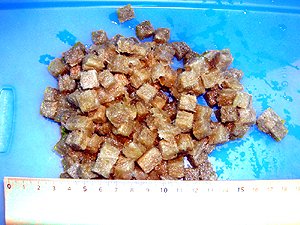 |
| Repotting |
| Always to be done on wet rockwool. The roots of the plant to be repotted will beforehand be washed of any old compost trace, especially if it was organic compost. This is very important. In opposition to what happens in semi-hydroponics culture, there is no need to wait for the plant to grow new roots to transfer it. It will be fed by the old ones during the adaptation time, during which you will let the pot get a bit dry between two waterings (not entirely dry). When the new roots appear, they should be adapted, and from then, the plant may be watered as often as wanted. |
| Care |
|
The substrate being inert, there is need for a real fertilizer program, with supplements additions (vitamins and amino-acids) to make up for the lack of biochemical reactions of the soil. It appears to be one of the reasons, but not the only one, for which the epyphits present very few or no cultural problems at all whereas certain terrestrial ones may encounter deficiency troubles (this is not the case of the brachypetalum). Since the plants must be continually fed, the watering must be systematically performed with a nutrient solution. Watering with water only must be avoided, except when the plant has been given too much fertilizer. The pot will be abundantly watered, letting the leachate flow, in order to filter out the previous watering residues. In those conditions, the EC and pH stay around those of the watering solution, and everything happens within the soil composition, as if the plant had just been repotted. The nutritive cycle I adopted is as follows: Watering 1: fertilizer + Supervit The fertilizer dose depends on the plant itself. I usually use about 0.7 ms/cm_ of organic fertilizer, type 2.19/0.56/1.76 (orchid focus grow) in a water that has already been enriched in calcium nitrate. My watering pH is of 6. The Supervit is administered at the rate of one drop for 5 liters, and the same goes for the Superthrive. |
| Deficiencies |
| They only affected a few paphs from the Paphiopedilum
and Parvisepalum (to a lesser extent) sections among all
my plants. The phenomenon seems to have two origins: the absence of biochemical reactions from the soil and a strong acidity near the roots. This acidity attacks the rockwool, which then rejects calcium (and probably aluminium too, in a sizeable quantity, but this has to be verified through a leaf analysis). The pH increases and blocks the assimilation of other trace elements, such as manganese and zinc. Those deficiencies seem to adapt as needed by adding a supplement of Mn and Zn in respect to Fe, and by punctually increasing the solution pH. However, this is not the point of this paper. |
| Culture Parameters |
| Here is the technique I adopted for the species from the brachypetalum section. This relates to ang-thong, bellatulum, concolor, godefroyae (and leucochilum), niveum et wenshanense. Hybrids of brachypetalum influence seem to appreciate that treatment too. |
| Nature of the Substrate: rockwool |
|
Temperature Average Interval - Summer: 22 - 35。C Temperature Average Interval - Winter: 20 - 25。C |
| Nature of the watering solution (water and
fertilizer types): reverse osmosis water 50% tap water 50 % + nitric acid organic fertilizer type 2/1/2 (plus, Ca(NO3)2 is created thanks to the nitric acid) |
|
Electroconductivity of the watering solution: EC = 0,7 ms/cm pH of the watering solution: 6,0 . Electroconductivity of the leachate : EC # starting EC Leachate pH:pH # starting pH Light intensity: 10.000 lumens (plants placed under neon tubes) |
|
Comments/notes/observations : Translation by Caroline Crouzette traduction@lyne.be |
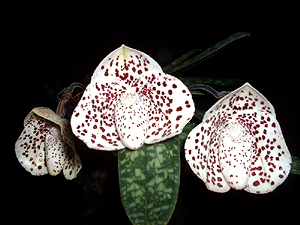 |
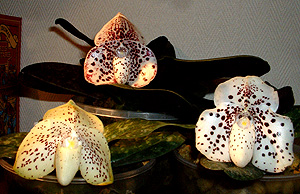 |
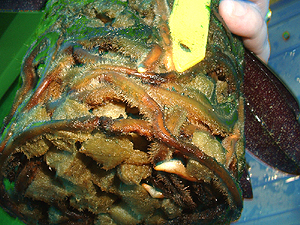 |
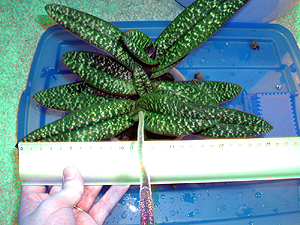 |
|
|
|
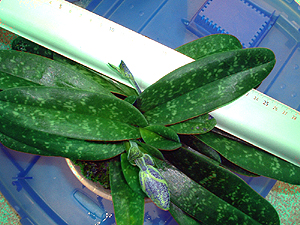 |
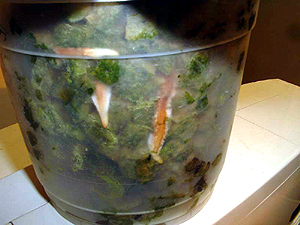 |
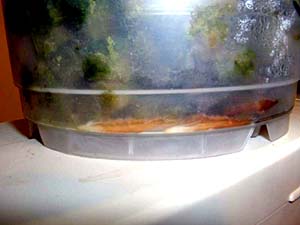 |
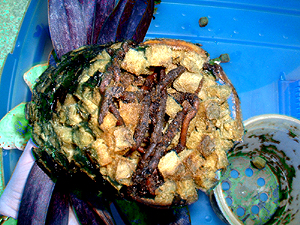 |
|
|
|
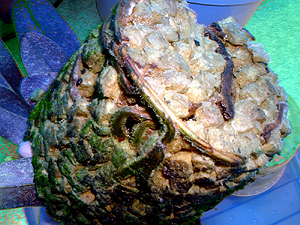 |
|
|
|
|